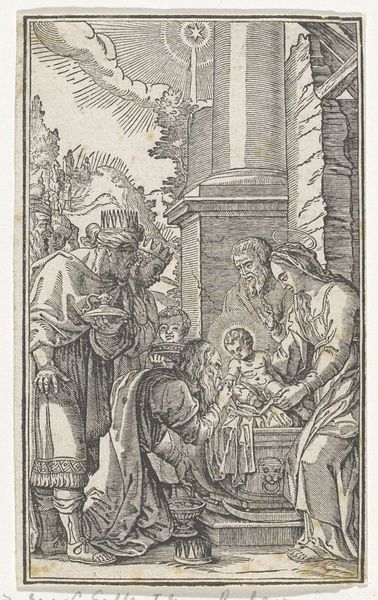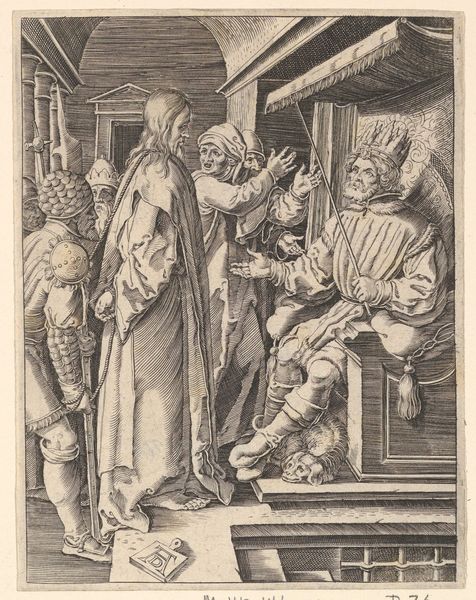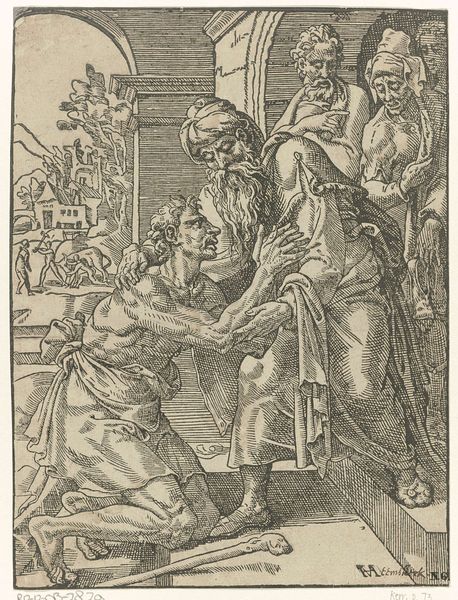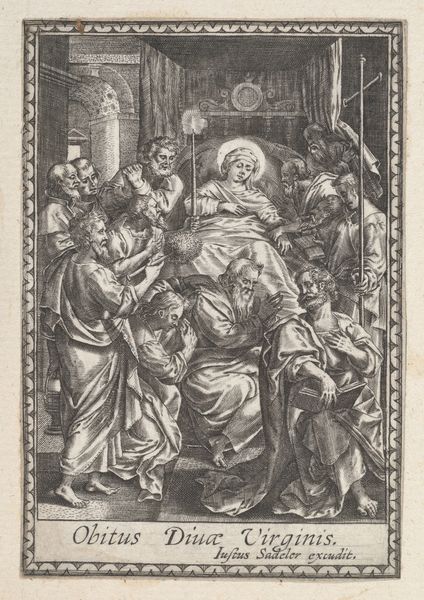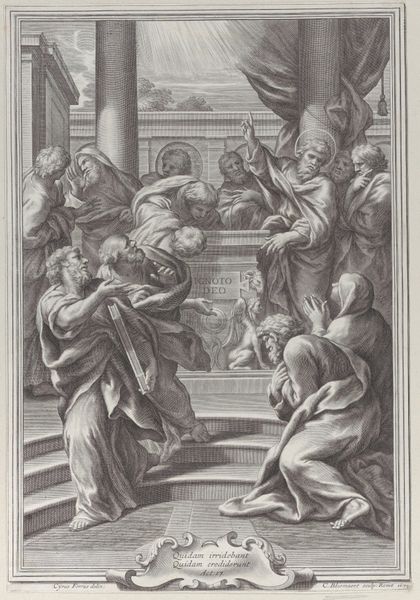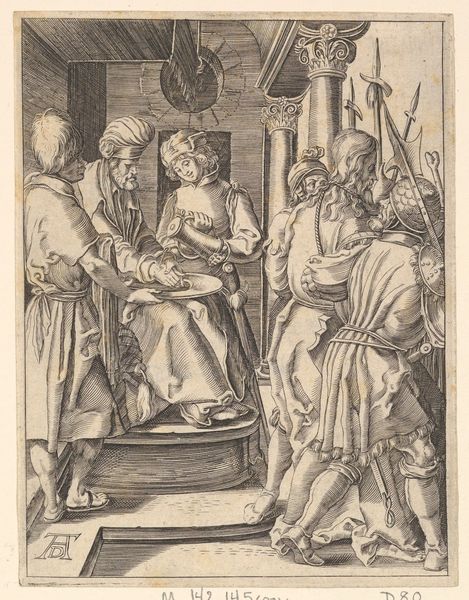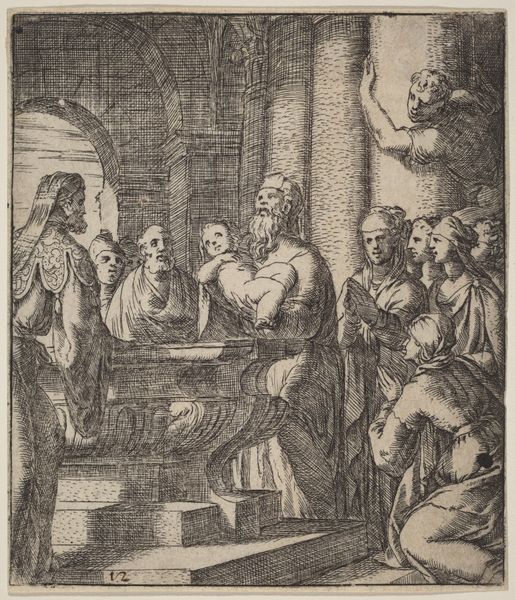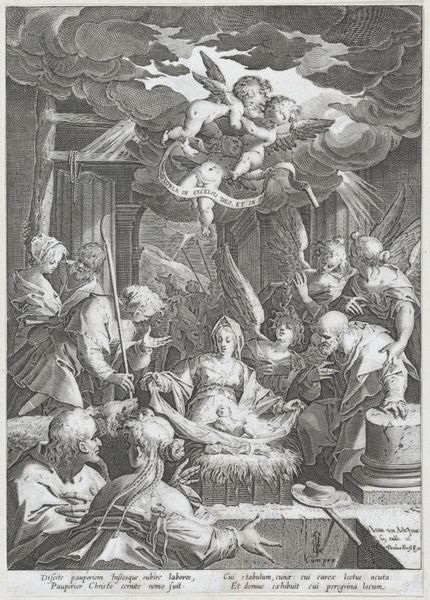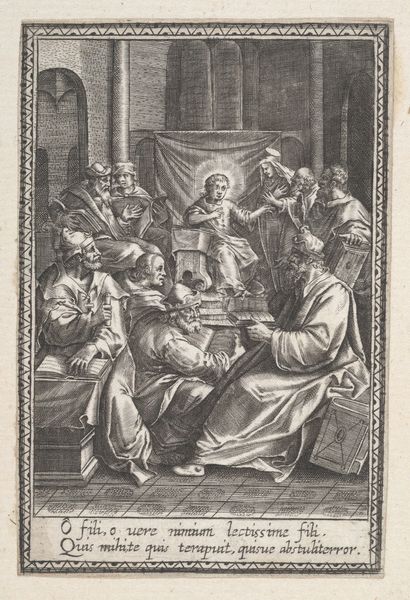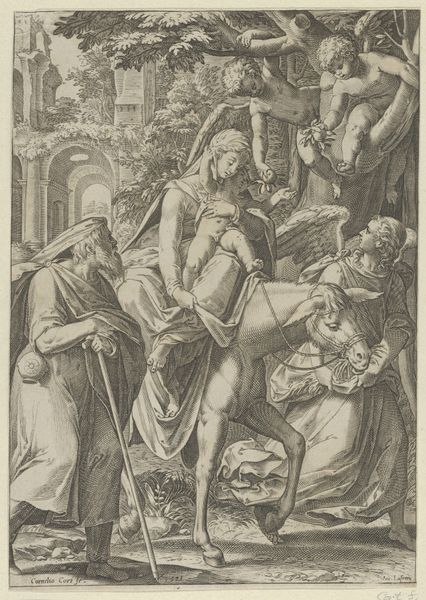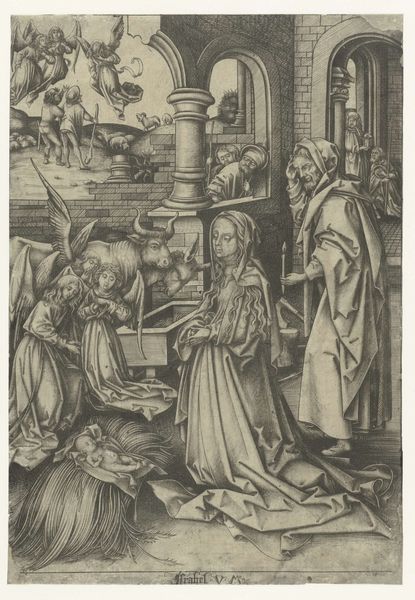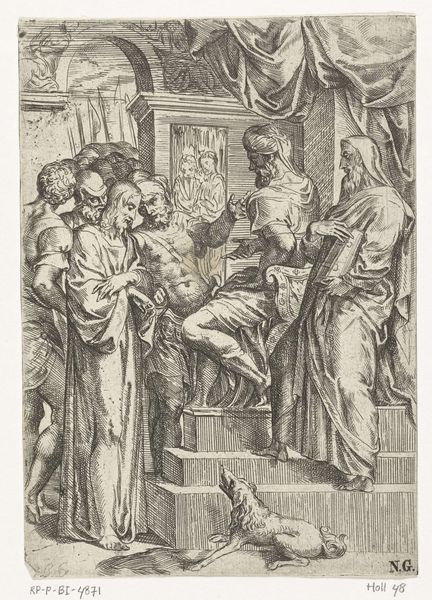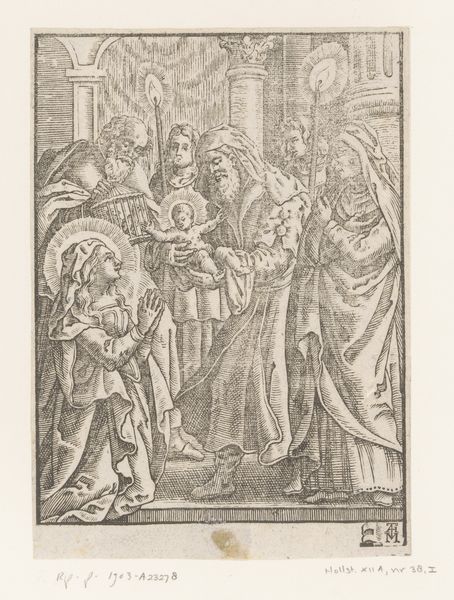
The Massacre of the Innocents with the Flight into Egypt, from the series The Life of the Virgin 1495 - 1505
0:00
0:00
drawing, print, engraving
#
drawing
#
medieval
#
narrative-art
# print
#
figuration
#
history-painting
#
northern-renaissance
#
engraving
Dimensions: Sheet: 10 11/16 × 7 1/4 in. (27.2 × 18.5 cm)
Copyright: Public Domain
Curator: This is Israhel van Meckenem's "The Massacre of the Innocents with the Flight into Egypt," a compelling engraving created between 1495 and 1505. Editor: It's harrowing. The chaos and the visible suffering, particularly of the mothers… It's etched right into the composition. It really grabs you by the throat. Curator: Indeed. Meckenem masterfully combines two biblical episodes. In the foreground, we witness Herod's soldiers brutally killing infants, while in the background, we see Mary, Joseph, and the infant Jesus fleeing to Egypt. The duality really heightens the emotional impact. Editor: It forces a comparison, doesn't it? Between violent patriarchal authority enacting terror, and the hope embodied in the female figure's escape, the possibility of a different future. The dead babies become symbols, then. Curator: Precisely. And the piece wasn't created in a vacuum; during the Northern Renaissance, printed images like these played a vital role in disseminating information and religious narratives to a wider audience. Think of the printing press as early social media. Editor: Making this atrocity visible… almost journalistic. What's striking to me, as well, is the detail—you see the emotional weight in the face of the mothers, you almost sense the cool deliberation of King Herod. What message does that communicate, portraying him this way, during a time of absolute monarchies? Curator: That question engages a powerful point about the role of artists operating in socio-political environments. Did such detailed renderings serve as warnings against the abuse of power? I feel compelled to believe so. The artist lived during times of rigid social stratification that dictated his work to some degree. Editor: Right, the visual power of this piece resonates profoundly across different power structures that seek to inflict violence. It almost feels prophetic, like a medieval call-to-action we can see echoed in contemporary art and activist work. Curator: The impact is really multi-layered then, on several fronts both socially and historically. This one piece then invites contemplation of both the era's history as well as modern parallels and art. Editor: Exactly. Looking at this work has highlighted just how effective art is at becoming a social and political marker throughout time.
Comments
No comments
Be the first to comment and join the conversation on the ultimate creative platform.
